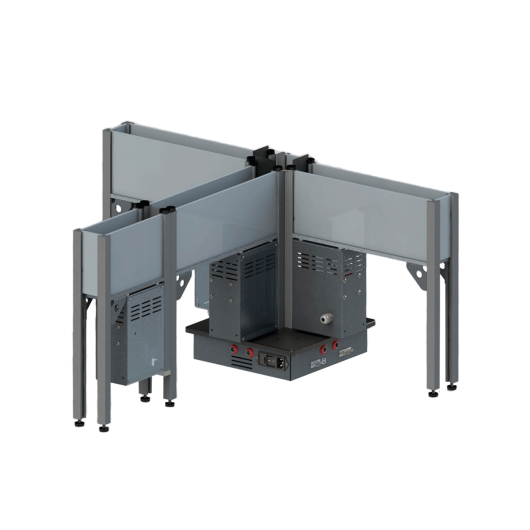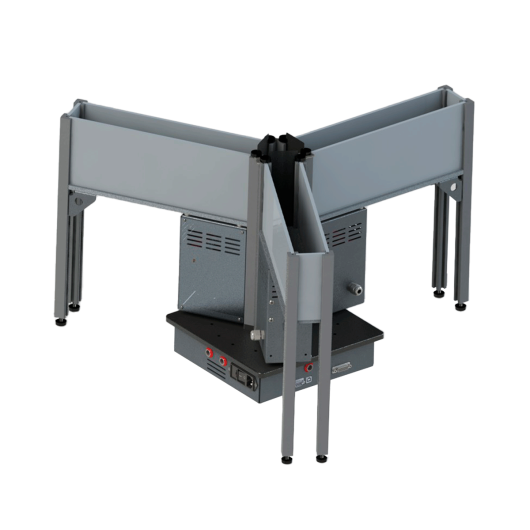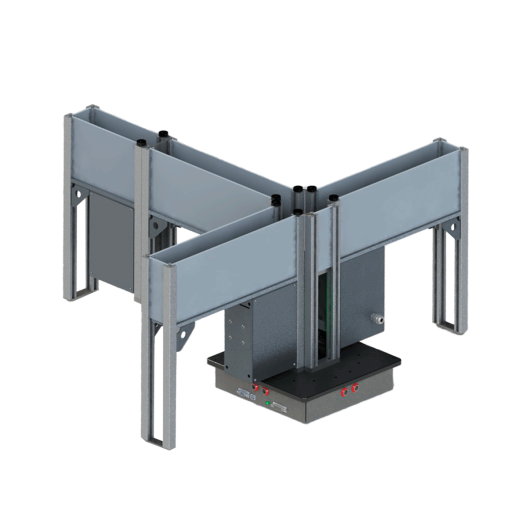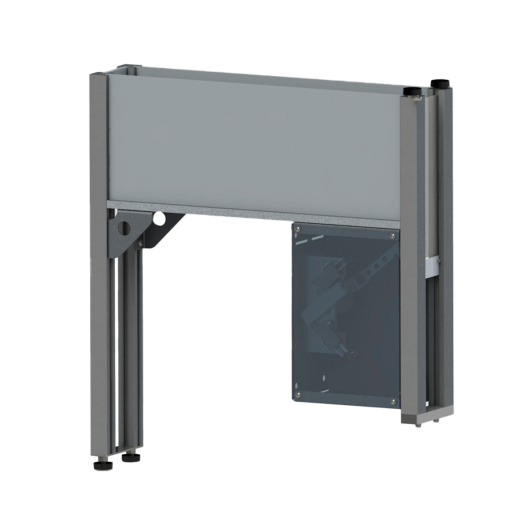






Multi-Maze, fully automated modular system for mouse or rat
Features
- New proprietary modular system
- Doors slide underneath the floor
- Each arm provided with its own motor
- Manual or PC-driven mode
- Interchangeable walls, standard or low profile
Benefits
- One device can be assembled in different configurations
- Unobstructed view for optimal videotracking even in optogenetics studies
- Smooth and silent operation
- Via TTL or USB connection
- For egocentric or allocentric spatial memory tests
Application
Spatial memory is the ability to create a mental geographical map of the surroundings and to navigate the environment accordingly (Ref). In humans, for example, spatial memory allows one to easily find the way to the right office in a large building.
While the definitions of working and reference memory may be subtle and can be debated among scholars, briefly, working memory is the ability to keep track of which
offices we have already visited while looking for someone, while reference memory allows us to remember which of the many rooms is Mary’s office.
In rodent studies, spatial memory can be tested by placing animals in mazes composed of 3 or more radially arranged walkways (arms) and observing either spontaneous
exploratory behavior or reward-based navigation.
Method paper
- D.S. Olton and R.J. Samuelson: "Remembrance of places passed: Spatial memory in rats" Journal of Experimental Psychology: Animal Behavior Processes, 2 (2): 97–116, 1976
- Cunha et al. “Brain-Derived Neurotrophic Factor (BDNF) Overexpression in the Forebrain Results in Learning and Memory Impairments” Neurobiology of Disease: 358-368, 2009
- Gitler et al. “Different Presynaptic Roles of Synapsis at Excitatory and Inhibitory Synapses” The Journal of Neuroscience, 24(50): 11368-11380, 2004
- Tracey J. Shors “Learning during stressful times” Learning and Memory 11: 137-144, 2004
- E. D. Lewin “Use of the Radial-Arm Maze to Assess LEARNING and Memory in Rodents” Methods of Behavior Analysis in Neuroscience, ed. Jerry J. Buccafusco, CRC Press LLC, Boca Raton, Florida USA, 2001
- Jacqueline N. Crawley “What’s Wrong with my Mouse”: Chapter 6 “Learning and Memory”, Wiley Inc., New York, USA, 2000
| Product name | |
|---|---|
| 41503 3-arm standard multi-maze configuration (Y-maze) for mouse | |
| 41508 8-arm standard multi-maze configuration, for automated radial maze and Y-maze test, for mouse | |
| 41513 3-arm standard multi-maze configuration (Y-maze) for rat | |
| 41504 3-arm multi-maze configuration, plus arm with automated START compartment (for Y and T-maze), for mouse | |
| 41514 3-arm multi-maze configuration, plus arm with automated START compartment (for Y and T-maze), for rat | |
| 41518 8-arm standard multi-maze configuration, for automated radial maze and Y-maze test, for rat |







